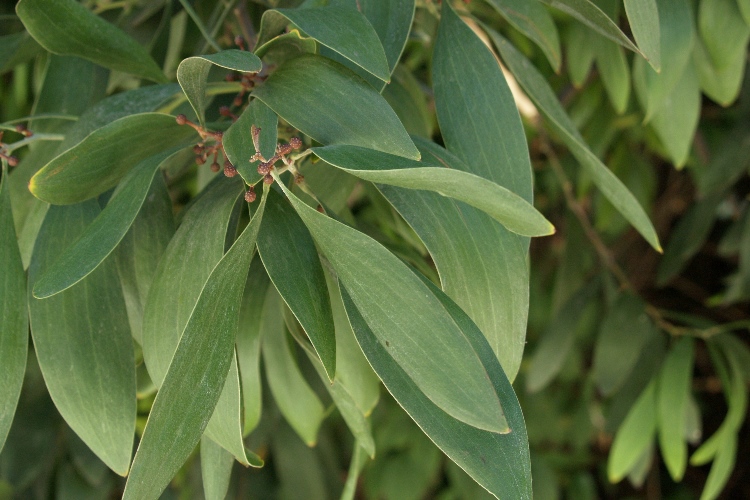
Australian Blackwood
Acacia melanoxylon
Family and description
Belonging to the Mimosaceae (Leguminosae) family, Acacia melanoxylon is an evergreen tree that can reach 15 m in height. It has a dense crown, round to pyramidal in shape, and a dark brown trunk that is deeply cracked in adult trees.
The leaves are reduced, without a blade, confused with the petiole that widens and takes on its functions – phyllodes. These are laminar, lanceolate to oblanceolate, slightly curved, dark green, about 6 to 13 cm long, with 3 to 5 longitudinal veins. When young, the leaves can have two shapes: recomposed or in phyllodes.
The pale-yellow flowers appear between March and June, arranged in clusters of 10 to 12 mm in diameter.
The fruit is a pod, appearing at the end of summer with a reddish-brown colour and a long, twisted shape. The seeds are surrounded by orange structures (funiculi).
Origin and habitat
It is native to south-eastern Australia and Tasmania. In Portugal it is dispersed throughout all regions with an invasive character, having this status in other countries of the world as well. It appears on the edges of forest stands, riparian forests or roadsides.
It tolerates dryness, extreme temperatures, sea winds and pollution. It does not resist waterlogging. It prefers acidic, granitic soils, avoiding limestone. In Portugal, the species is more frequent up to 100 m in altitude and at a distance from the sea of between 6.7 and 100 km.
Uses and curiosities
Fast growing species.
It is propagated by vegetative means or by the dissemination of seeds through the wind, water and animals such as birds or rodents. The seeds can remain viable in the soil for 50 years, germinating according to the area availability or after a fire.
Due to the quality of its dark wood, it was originally introduced for ornamental purposes and forestry production. Widely used in carpentry.
